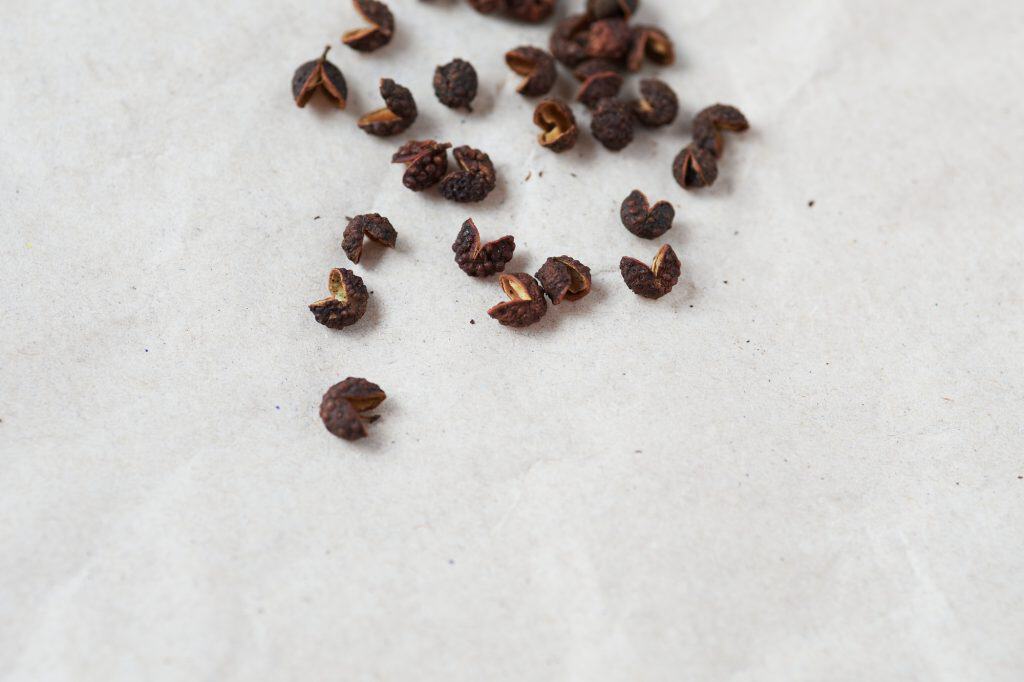Timut Pepper: A distinctive Spice with Cultural Significance
Timut pepper is a spice that holds a special place in Nepali cuisine and the surrounding Himalayan regions. While not as widely recognized in the United States, it is a valued ingredient in traditional dishes and carries significant cultural importance.
Derived from the berry husks of Zanthoxylum armatum, this spice has a distinctive citrusy flavor and is known for the tingling sensation it creates, similar to Sichuan peppercorns. In this article, we will explore the origins, flavor profile, culinary uses, and health benefits of timut pepper, providing a comprehensive understanding of this fascinating spice.

What is Timut Pepper?
Timut pepper, also referred to as “timur pepper” or “Nepalese pepper,” comes from the plant Zanthoxylum armatum. It is harvested from the dried husks of small, berry-like fruits that grow in the Himalayan region. This spice shares many characteristics with Sichuan peppercorns, particularly the distinctive numbing and tingling sensation it imparts, known as “mala.” While it is commonly grouped with peppercorns due to its name, timut pepper is not part of the true pepper family, Piperaceae, but rather belongs to the citrusy and aromatic family of Zanthoxylum plants.
Timut pepper has a long history in Nepalese and Himalayan culture, playing a significant role not only in cooking but also in traditional medicine. It has been used for centuries to treat a variety of ailments and is an integral part of the region’s culinary heritage.
Flavor Profile of Timut Pepper
The flavor of timut pepper is often described as vibrant and citrusy, with strong notes of grapefruit. Its taste is both refreshing and pungent, making it a unique addition to many dishes. One of the most distinctive qualities of timut pepper is the numbing and tingling sensation it causes when consumed. Unlike chili peppers, which contain capsaicin and produce heat, timut pepper contains compounds that trigger a different kind of sensory experience without being spicy. Because it does not contain capsaicin, timut pepper has a Scoville Heat Unit (SHU) rating of 0.
This spice’s ability to create both a flavorful and tactile experience makes it particularly appealing in various culinary applications, adding a new dimension to both sweet and savory dishes.
Comparison: Timut Pepper vs. Sichuan Pepper
Timut pepper is often compared to Sichuan pepper due to their shared numbing and tingling effects. Both spices belong to the Zanthoxylum genus, but they are derived from different species. Timut pepper comes from Zanthoxylum armatum, while Sichuan pepper is from Zanthoxylum simulans. While their effects on the palate are similar, there are differences in their flavors and appearance.
Timut pepper has a darker, more muted color, while Sichuan peppercorns tend to be lighter and redder. Flavor-wise, timut pepper is more citrusy, with a strong grapefruit note, while Sichuan pepper has a more floral and slightly woody flavor. Some people claim that timut pepper has a more intense tingling effect, while others argue that Sichuan pepper takes the lead in terms of sensory impact. Either way, both spices are treasured for their unique ability to elevate dishes through both flavor and sensation.
Comparison: Timut Pepper vs. Black Peppercorn
Though both timut pepper and black peppercorn are commonly referred to as “pepper,” they come from entirely different plant families. Black peppercorns are derived from the plant Piper nigrum, while timut pepper belongs to the Zanthoxylum family. The flavor profiles of these two spices are also quite distinct. Black peppercorn is known for its sharp, spicy, and slightly earthy taste, while timut pepper offers a bright, citrusy flavor that doesn’t deliver heat but instead creates a tingling sensation.
In cooking, black pepper is often used as a general seasoning, while timut pepper is more specialized and used to enhance specific flavors. Timut pepper is particularly well-suited to dishes where citrus flavors and textural sensations are desired.
Culinary Uses of Timut Pepper
Timut pepper is a versatile spice that can be used in both traditional and modern culinary contexts. In Nepal and the surrounding regions, it is commonly used in pickles, chutneys, and spice blends. One popular dish featuring timut pepper is achaar, a type of spicy pickle condiment. It is also frequently added to dumplings, soups, and noodle dishes, pairing well with other warming spices like cinnamon and fenugreek.
Beyond traditional Nepalese cuisine, timut pepper is increasingly being used in modern cooking to add a unique flavor and textural element to dishes. It pairs particularly well with citrus-based drinks and desserts, where its grapefruit-like flavor and tingling sensation complement the sweetness and acidity of the other ingredients. Chefs have started experimenting with using timut pepper in ice cream, cocktails, and even chocolate, adding an unexpected twist to familiar flavors.
Other Uses of Timut Pepper
In addition to its culinary applications, timut pepper has been used for centuries in traditional medicine. In Nepal, it has been utilized to treat a variety of ailments, including toothaches, colds, coughs, and fevers. Its antimicrobial and anti-inflammatory properties have made it a staple in traditional herbal remedies. The shoots of the timut pepper plant were even used as toothbrushes, showcasing its multifaceted utility in everyday life.
Research has also highlighted the potential health benefits of timut pepper. Studies have shown that it possesses antioxidant, anti-inflammatory, and antimicrobial properties, suggesting that it may have broader applications in promoting health and wellness. These properties align with its traditional uses in herbal medicine, validating the long-standing knowledge passed down through generations.
Where to Buy Timut Pepper
Note: This article contains affiliate links, which means that if you click and purchase, we may earn a small commission at no extra cost to you. Thank you for supporting our content!
While timut pepper is a common ingredient in Nepal and other parts of the Himalayan region, it can be more difficult to find in the United States. Local specialty markets that cater to the Nepalese community may carry it, but it is not typically available in mainstream grocery stores.
For those interested in trying timut pepper, it is readily available for purchase online. McCormick, a well-known spice company, offers Nepalese timut pepper on Amazon, along with several other specialty brands. Purchasing timut pepper online is a convenient way to experience this unique spice, especially if you’re looking to explore new flavors and sensations in your cooking.
Timut pepper is a spice that offers more than just flavor—it provides a sensory experience that sets it apart from other spices. Its citrusy notes, combined with its numbing and tingling sensation, make it a valuable ingredient in both traditional and modern cooking. Whether used to enhance savory dishes, desserts, or beverages, timut pepper brings a unique character to the table.






